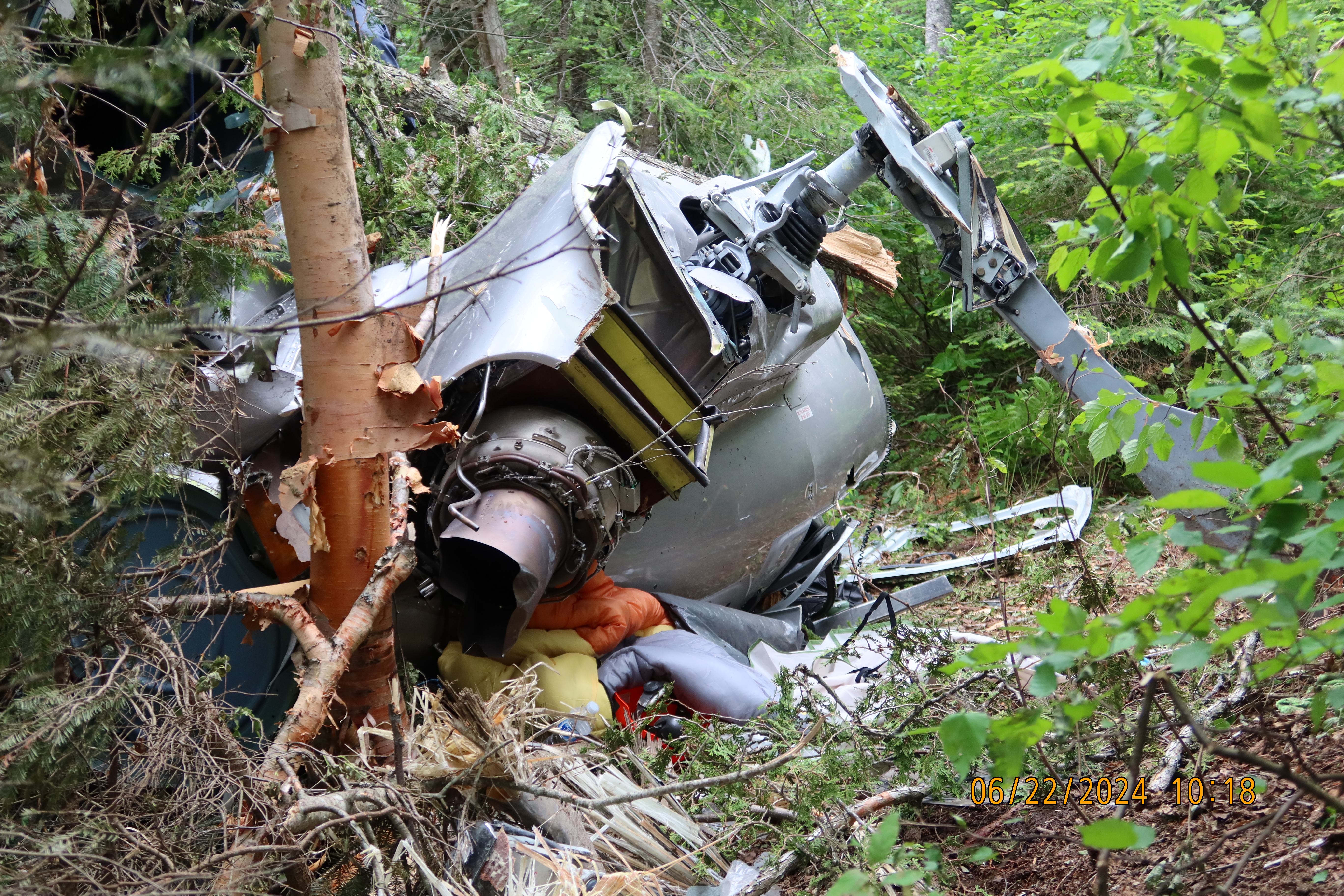Collision with terrain
Heli Explore Inc.
Airbus Helicopters AS350 B2 helicopter, C-GOOO
Wawa Airport (CYXZ), Ontario, 26 NM W
The occurrence
On 20 June 2024, the AS350 B2 helicopter, operated by Heli Explore Inc., was conducting long lining operations in support of exploratory drilling at a mine site, located west of the Wawa Airport, Ontario.
During the second lift of the day, while flying at about 300 feet above ground level, the pilot began a gradual descent and shortly thereafter felt a strong jolt that affected the helicopter's attitude. The pilot then attempted to regain control of the aircraft, but after a subsequent and more severe jolt, he released the slung load, which fell into a wooded area.
The helicopter then began to yaw to the left. The pilot attempted to correct this situation but was unsuccessful. He then tried to gain some forward speed to reduce the yaw but did not have enough remaining altitude to complete the maneuver and decided to make an emergency landing in a wooded area.
During the emergency landing, the main rotor blades struck trees, and the helicopter was destroyed, coming to rest on the lower right side of the fuselage. The emergency locator transmitter activated. The pilot was able to exit the helicopter on his own and use his satellite phone to contact the helicopter's owner and relay his coordinates. Personnel waiting to receive the slung load heard the impact, and made their way to the scene to assist, arriving about an hour after the accident.
The Joint Rescue Coordination Centre received the signal and dispatched a search and rescue helicopter to transport the pilot to a nearby hospital, where he was treated for minor injuries. The TSB is investigating.
Media materials
Investigation information
Download high-resolution photos from the TSB Flickr page.
Class of investigation
This is a class 3 investigation. These investigations analyze a small number of safety issues, and may result in recommendations. Class 3 investigations are generally completed within 450 days. For more information, see the Policy on Occurrence Classification.
TSB investigation process
There are 3 phases to a TSB investigation
- Field phase: a team of investigators examines the occurrence site and wreckage, interviews witnesses and collects pertinent information.
- Examination and analysis phase: the TSB reviews pertinent records, tests components of the wreckage in the lab, determines the sequence of events and identifies safety deficiencies. When safety deficiencies are suspected or confirmed, the TSB advises the appropriate authority without waiting until publication of the final report.
- Report phase: a confidential draft report is approved by the Board and sent to persons and corporations who are directly concerned by the report. They then have the opportunity to dispute or correct information they believe to be incorrect. The Board considers all representations before approving the final report, which is subsequently released to the public.
For more information, see our Investigation process page.
The TSB is an independent agency that investigates air, marine, pipeline, and rail transportation occurrences. Its sole aim is the advancement of transportation safety. It is not the function of the Board to assign fault or determine civil or criminal liability.
